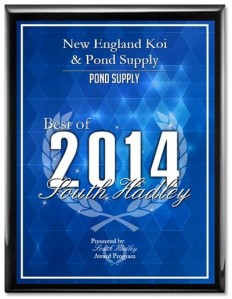Water change outs in Ponds
Partial water change outs can reduce the amount of anything dissolved in the water but not totally remove it. Although it is sometimes necessary, draining and refilling a pond should only be used as a last resort!
Drain some water from the pond before refilling; ideally pumped or siphoned from the dirtiest conditions from the bottom of the pond.
Remove no more the 20% of the pond volume at a time; 5 to 10 percent of a pond's water per week is more in line. Larger water changes are likely to upset the biological balance of the pond.
A water change out reduces the amount of a substance in the water by the same amount as the percentage of water replaced. Remember the concentrations of anything beneficial in the pond is being reduced at the same rate!
It is very common for pond keepers to skip making these routine water change outs. This is not advisable as many things can build up in your pond over time and this is the only way to reduce them. Experienced pond keepers know that their fish are healthier and stronger when these water change outs are conducted.
More Pond Water Chemistry
Alkalinity, often referred to as -carbonate hardness, or German carbonate hardness, is the measure of carbonate and bicarbonate concentrations in your aquarium water. Alkalinity is a measure of the...(click on product image for more details)
Where does the ammonia originate from
Pond fish produce waste in the form of ammonia, which is released into the water through the gills. Ammonia can also originate from the dead and decaying plant...(click on product image for more details)
Acceptable concentration 0
A gas widely used in the disinfection of water and as an oxidizing agent for organic matter, manganese, iron, and hydrogen sulfide.
Chlorine is known to react with...(click on product image for more details)
Sometimes referred to as an algae bloom, Another factor which can influence the pH of the water is the presence of plants, most notably if there is an algae bloom in the pond. During the hours of...(click on product image for more details)
Nitrate, NO3-N,
Nitrate is the final product from the breakdown of ammonia released by the fish.
Nitrate is not especially harmful to freshwater fish but is a potent plant fertilizer and can...(click on product image for more details)
As the ammonia in the water begins to reduce, the secondary break down product, nitrite will begin to increase and this is also very poisonous to fish.
Nitrite is a skin irritant and will cause the...(click on product image for more details)
The pH is in all respects a measure of acidity and alkalinity, pH 0 - 6.99 is acid- pH 7.0 is regarded as neutral and pH 7.01 - 14.0 is alkaline. On the whole the pH is not generally a problem but it...(click on product image for more details)
Common salt, Sodium Chloride -NaCl- is commonly used in the health care and maintenance of fishes especially Koi. Salt is useful in treating parasites. It will eliminate seven out of nine parasites that...(click on product image for more details)

